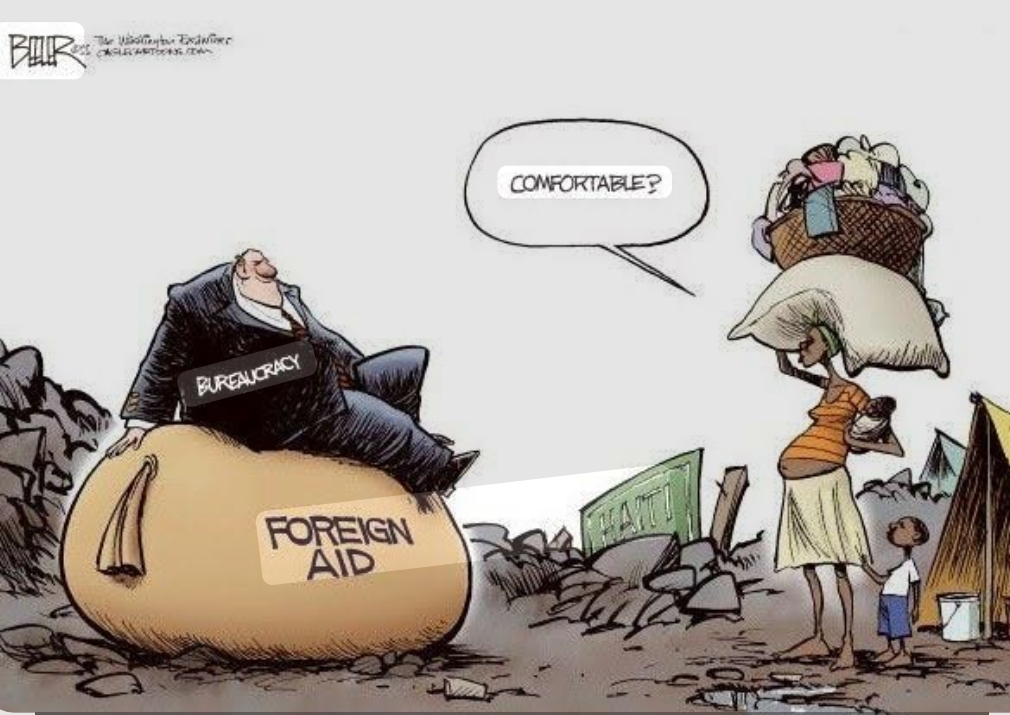
‘GHOST AID!’ …DECADES OF BILLIONS, LITTLE TO SHOW
By Ibrahim Alusine Kamara (Kamalo)
Since achieving independence in 1961, Sierra Leone has repeatedly announced the acquisition of foreign aid, and billions of dollars have flowed into the country over the decades. Yet, as time marches on, the lofty expectations of post-war recovery have not yielded sustained social transformation or significant improvement in the lives of ordinary citizens.
Today, 64 years later, Sierra Leone still struggles with the basics: clean drinking water remains elusive; electricity is erratic and unreliable; health care is underfunded and overstretched; educational infrastructure is inadequate; and food security is persistently fragile. Such persistent stagnation, amid massive inflows of external assistance, raises troubling questions about governance, oversight, and the true impact of foreign aid.
Now the nation enters the latest “Mission 300” package—an aid initiative worth about $2.2 billion, purportedly for sustainable energy production. The announcement has dominated headlines, but inside think tanks and civic forums, the same question is being asked: After all the aid that has “trickled in,” what has really changed on the ground?
Why billions have not translated into prosperity for Sierra Leone remain the aid paradox. Governance and accountability gaps abound. The failure is not simply in the volume of money received, but in how it’s managed. Weak institutions, opaque budgets, and favoritism in resource allocation have allowed funds to vanish without visible results. Public discontent often centers less on the existence of aid, and more on its misuse or misdirection.
There is also the vice of misaligning priorities with donor-driven projects. Too often, aid packages come tied to strings/donor agendas or projects that do not align with local realities. These externally designed programs can overlook the geographic, cultural, and institutional constraints inside Sierra Leone, leading to what appear to be “showcase” projects that fail to resolve systemic problems.
Additionally, low absorption capacity undermines the aid feasibility. Even when funds arrive, the ability of government agencies and local administrations to absorb and deploy them effectively is limited by capacity constraints, including weak civil service, procurement delays, logistics challenges, and lack of technical expertise.
In some cases, perverse incentives undermine the essence of aids. The presence of large foreign aid inflows can crowd out domestic revenue mobilisation or reduce the urgency for internal reform. When aid becomes a staple rather than a support mechanism, it can dull political will and accountability to citizens.
Further, the depth of Sierra Leone’s deficit in infrastructure, human capital, and institutional strength is so great that aid alone—no matter how well administered—cannot fully bridge the gap. The fundamentals of economic development require sustained investment, policy coherence, and consistent leadership over decades.
For “Mission 300”, though it alights new hopes, familiar doubts remain deep. This new aid initiative is meant to bolster the energy sector—a linchpin Sierra Leone has long lagged. Indeed, without reliable power, agriculture, manufacturing, and education, and every sector, suffer. Yet for many observers, the question isn’t whether the “Mission 300” funds will come, it’s whether they will reach the right channels, be spent wisely, and deliver results—or whether Mission 300 will simply be another line item in the long ledger of unmet aid promises.
Meanwhile, the credibility question that looms large is how a government that continues to struggle in basic service delivery still passes external checks like MCC and Mission 300 indicators. For citizens who are losing faith, such benchmarks feel disconnected from lived reality.
However, a way forward exists beyond aid hype. First, oversight and accountability must be strengthened, and aid agencies, civil society, and the press must insist on transparent, participatory budgeting and performance tracking. Second, projects should be aligned with local priorities, where communities must have voice and decision-making power in how aid serves them. Third, institutional capacity should be built to make aid include investment in governance systems, not just infrastructure.
Fourth, development must be democratized, ensuring leadership to shift from top-down to bottom-up, with true empowerment of local councils and communities. And fifth, dependence on aids must be gradually reduced with self-reliance being the ultimate goal. The authorities should consider using aid only as a temporary catalyst—not a perpetual crutch.
This should not be seen as a rejection of partnerships, but a call for a new pact with citizens, who deserve more than aid packages and headlines.
After six decades of postponement, the question is no longer the arrival of aid, but whether Sierra Leone will finally see the light it was promised. Sierra Leoneans deserve tangible change. They need power, water in every home, health services that heal, and schools that teach. We are a nation that has earned no shortage of sympathy or support, but time has come for questions of substance, not just numbers. Sierra Leoneans deserve more than recurrent announcements, but results that make them prosperous.